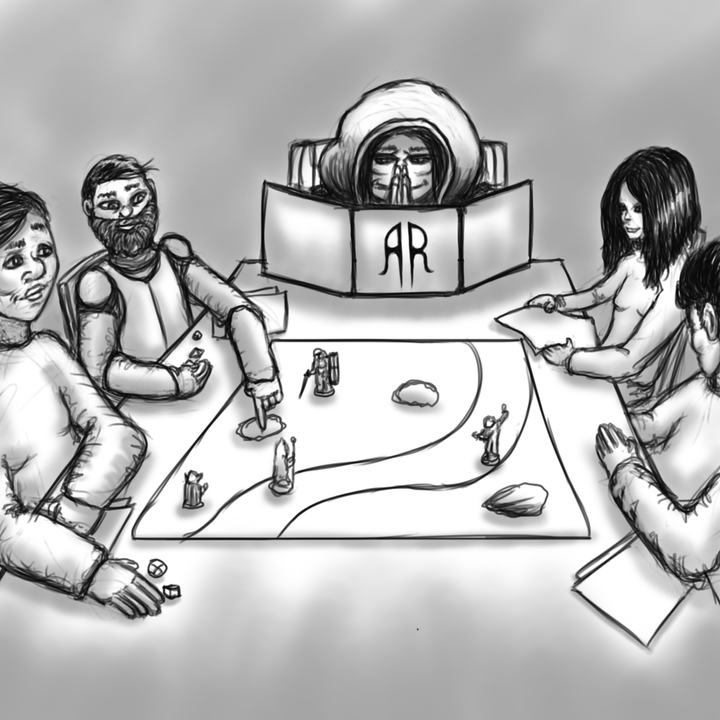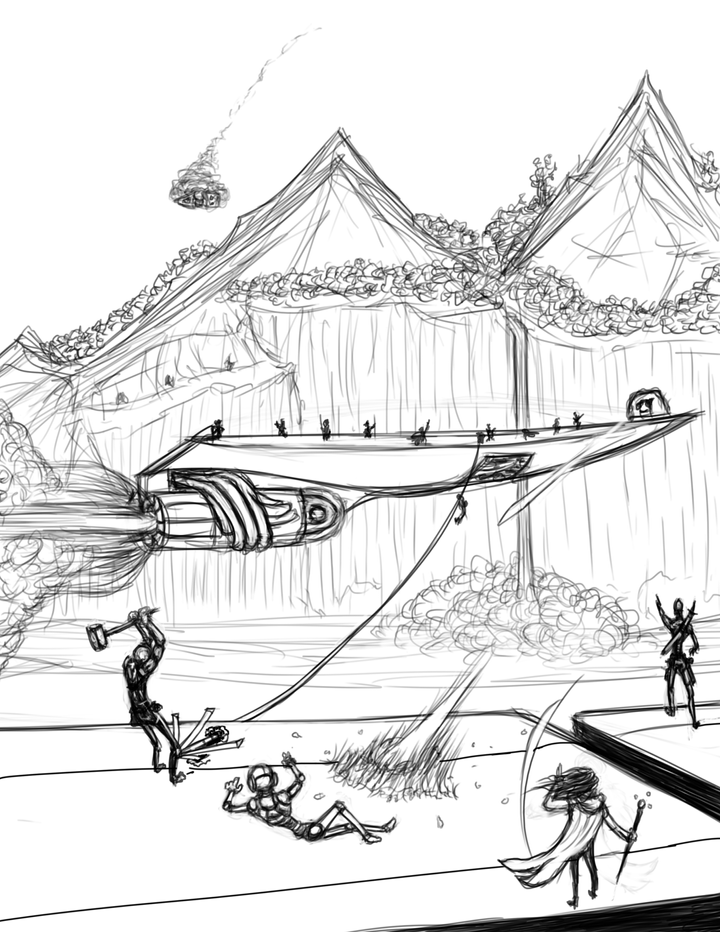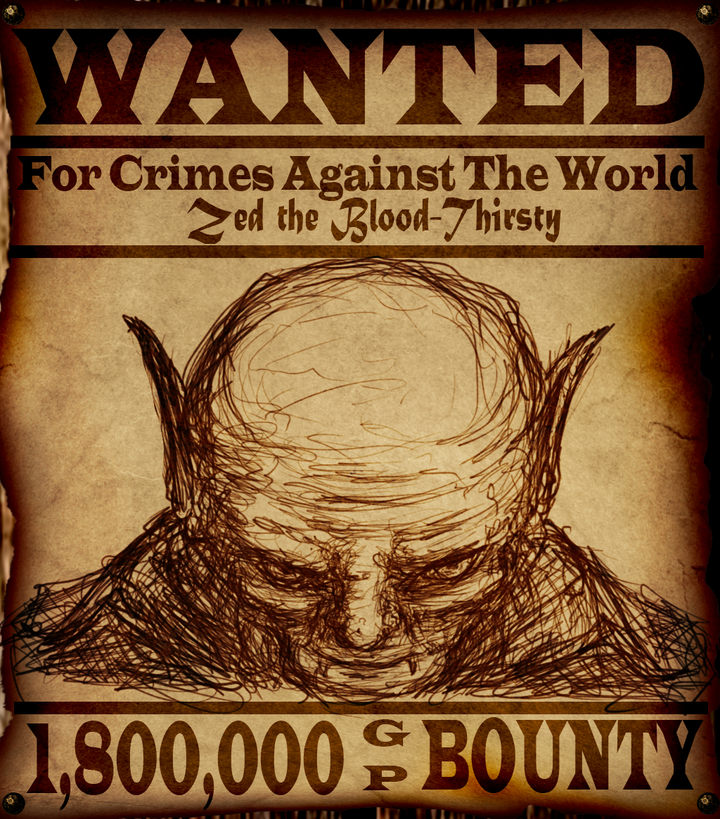Movement
All creatures that possess a form of locomotion are allowed movement on their turns. Various creatures will have different forms of movement and different speeds. This section will outline how to move your creatures in game and how to calculate their movement rates, distances and abilities.
The Combat Grid
The standard layout for Altered Realms is a 1 Meter to 1 Square grid. Each square in the grid is called a tile.
Movement
Movement is one of the main phases of each creature’s turn and allows them to traverse the game map and overcome obstacles.
Movement Speed
A creature's movement speed is representative of how quickly and far they can move in a small window of time. Each creature will have its movement speed/distance in meters, listed on its Character Sheet or Creature Stat Block.
Moving Before or after an Action
Your movement only ends if it is forced to end, you choose to end it or you have no remaining movement available. Otherwise you can move and attack as you see fit during your turn.
Rough Terrain
Uneven ground, stairs and muddy, watery, or rocky terrain, or any walking surface that requires more diligence to traverse can all be considered Rough Terrain.
Rough Terrain always requires an additional meter of movement to be spent per meter moved.
Rough Terrain 1 Meter = 2 Meters of Movement to traverse.
Treacherous Terrain
A precarious pass with a long fall, a flimsy rope bridge, walking a tightrope, or on hot coals or spikes or any kind of precarious movement where failure could result in pain or injury is all considered to be Treacherous Terrain.
Treacherous Terrain Requires an accompanying Athletics or Acrobatics Skill Roll with a DC set by the Narrator, as well as an additional meter movement spent per meter of treacherous terrain traversed.
Passing Through
Threatening creatures prevent non-allied creatures from moving through their occupied tiles, however particularly agile creatures can attempt to Pass Through enemy occupied tiles using an Acrobatics skill Roll. The DC for this Skill Roll is always equal to Double the target creature's current AC total. The price for failure is the expenditure of the Movement and a Reaction Attack granted to the target creature. A Critical Failure (Rolling a 1 on the die) also results in the creature attempting to Pass Through being Knocked Prone.
The larger a creature is in comparison to the creature Passing Through the easier this becomes. Use the table below as a reference.
| Size Categories Larger | Modifier |
|---|---|
| 1 | -2 to DC |
| 2 | -4 to DC |
| 3 | -6 to DC |
| 4 | -8 to DC |
| 5 | -10 to DC |
Moving Through Ally Spaces
All creatures can move freely through ally spaces but cannot end their movement on the same space as another creature.
Movement Type
Movement Type is the method of locomotion utilized for a Movement.
These include but are not limited to Climbing, Crawling, Flying, Gliding, Hovering, Jumping, Phasing, Tunneling and Teleporting.
Climbing
Creatures can climb up or down surfaces with sufficient footholds using Athletics. The DC of the Climb is set by the Narrator. A successful navigation check can estimate the difficulty of the climbing route. The addition of a securely tied rope at the top of the climb adds +5 to any climbing checks made on that route.
Crawling
Prone creatures can crawl at 1/2 their normal movement speed, or spend half of their movement to Stand.
Some creatures have Crawling Movement and have a modified movement speed while crawling.
Flying
Flying movement is rare but not unheard of. Creatures that end their turn while flying are considered to be in mid flight. If a creature is knocked prone or loses consciousness while in flight, they fall the standard distance and receive any fall damage at the end of the fall. Creatures that start their turn falling but have flying movement must pass a DC 10 + Constitution and Strength modifier Athletics or Acrobatics Check to regain flight control.
Gliding
Creatures that have the ability to glide or are granted it can control the direction and speed of their descent while in the air (falling) for a number of meters equal to their strength modifier after which they fall as normal. While gliding, for every meter you move horizontally your altitude is reduced by 1 meter.
Hovering
Unless their Flying movement states otherwise, Hovering Uses 1 Stamina for each Round the Flying Creature remains in place.
Jumping
Creatures can jump horizontally using Athletics or Acrobatics. The distance of a standing jump is equal to your roll divided by 10 in meters.
The distance of a running jump (4 or more meters of movement prior to jump) is equal to your roll divided by 5 in Meters.
A vertical jump is equal to your roll divided by 10 in meters.
Phasing
Phasing is a rare form of travel usually utilized by incorporeal beings. Creatures with Phasing Movement can move through walls and obstacles, including enemy creatures. All obstacles and other creatures are considered difficult terrain to a phasing creature when moving through. A non-incorporeal phasing creature cannot end its movement on the same tile as another creature or obstruction.
Teleporting
Teleportation is a rare form of travel that allows a creature to travel from one point to another without physically traversing the area and thus any hazards between the starting and end point. Creatures with the ability to teleport must have a clear line of sight and effect to their target location within range and the target area must be unoccupied.
Tunneling
Some creatures possess the ability to tunnel under soft earths and sands allowing them to avoid attacks and detection while utilizing this ability. If a creature has the ability to tunnel, it will have its tunnel movement speed listed in meters on its character sheet or stat block.



